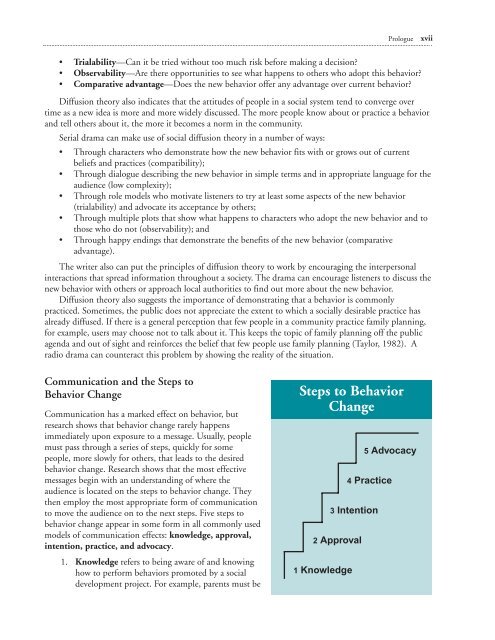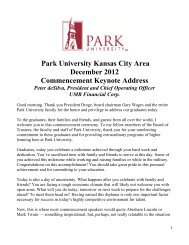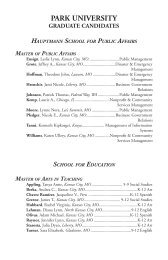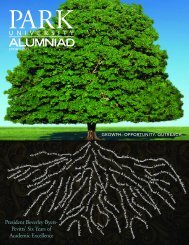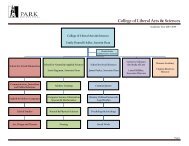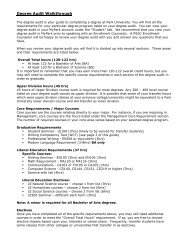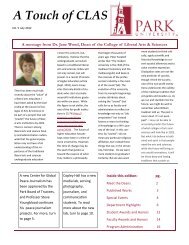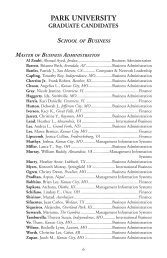How to Write a Radio Serial Drama for Social Development- PDF
How to Write a Radio Serial Drama for Social Development- PDF
How to Write a Radio Serial Drama for Social Development- PDF
Create successful ePaper yourself
Turn your PDF publications into a flip-book with our unique Google optimized e-Paper software.
Prologue<br />
xvii<br />
• Trialability—Can it be tried without <strong>to</strong>o much risk be<strong>for</strong>e making a decision<br />
• Observability—Are there opportunities <strong>to</strong> see what happens <strong>to</strong> others who adopt this behavior<br />
• Comparative advantage—Does the new behavior offer any advantage over current behavior<br />
Diffusion theory also indicates that the attitudes of people in a social system tend <strong>to</strong> converge over<br />
time as a new idea is more and more widely discussed. The more people know about or practice a behavior<br />
and tell others about it, the more it becomes a norm in the community.<br />
<strong>Serial</strong> drama can make use of social diffusion theory in a number of ways:<br />
• Through characters who demonstrate how the new behavior fits with or grows out of current<br />
beliefs and practices (compatibility);<br />
• Through dialogue describing the new behavior in simple terms and in appropriate language <strong>for</strong> the<br />
audience (low complexity);<br />
• Through role models who motivate listeners <strong>to</strong> try at least some aspects of the new behavior<br />
(trialability) and advocate its acceptance by others;<br />
• Through multiple plots that show what happens <strong>to</strong> characters who adopt the new behavior and <strong>to</strong><br />
those who do not (observability); and<br />
• Through happy endings that demonstrate the benefits of the new behavior (comparative<br />
advantage).<br />
The writer also can put the principles of diffusion theory <strong>to</strong> work by encouraging the interpersonal<br />
interactions that spread in<strong>for</strong>mation throughout a society. The drama can encourage listeners <strong>to</strong> discuss the<br />
new behavior with others or approach local authorities <strong>to</strong> find out more about the new behavior.<br />
Diffusion theory also suggests the importance of demonstrating that a behavior is commonly<br />
practiced. Sometimes, the public does not appreciate the extent <strong>to</strong> which a socially desirable practice has<br />
already diffused. If there is a general perception that few people in a community practice family planning,<br />
<strong>for</strong> example, users may choose not <strong>to</strong> talk about it. This keeps the <strong>to</strong>pic of family planning off the public<br />
agenda and out of sight and rein<strong>for</strong>ces the belief that few people use family planning (Taylor, 1982). A<br />
radio drama can counteract this problem by showing the reality of the situation.<br />
Communication and the Steps <strong>to</strong><br />
Behavior Change<br />
Communication has a marked effect on behavior, but<br />
research shows that behavior change rarely happens<br />
immediately upon exposure <strong>to</strong> a message. Usually, people<br />
must pass through a series of steps, quickly <strong>for</strong> some<br />
people, more slowly <strong>for</strong> others, that leads <strong>to</strong> the desired<br />
behavior change. Research shows that the most effective<br />
messages begin with an understanding of where the<br />
audience is located on the steps <strong>to</strong> behavior change. They<br />
then employ the most appropriate <strong>for</strong>m of communication<br />
<strong>to</strong> move the audience on <strong>to</strong> the next steps. Five steps <strong>to</strong><br />
behavior change appear in some <strong>for</strong>m in all commonly used<br />
models of communication effects: knowledge, approval,<br />
intention, practice, and advocacy.<br />
1. Knowledge refers <strong>to</strong> being aware of and knowing<br />
how <strong>to</strong> per<strong>for</strong>m behaviors promoted by a social<br />
development project. For example, parents must be<br />
Steps <strong>to</strong> Behavior<br />
Change<br />
5 Advocacy<br />
4 Practice<br />
3 Intention<br />
2 Approval<br />
1 Knowledge


